MusicRadar Verdict
Compared to the first batch of WorldMax snares, this is a definite step up, not just in the level of accomplishment, but also ambition. These drums have clearly been designed to compete against modern, high-end branded snares. Regardless of their value for money - which happens to be excellent - they put in a strong showing.
Pros
- +
Excellent build and sound quality. God value for money.
Cons
- -
Tacky badges. Ordinary snare releases.
MusicRadar's got your back
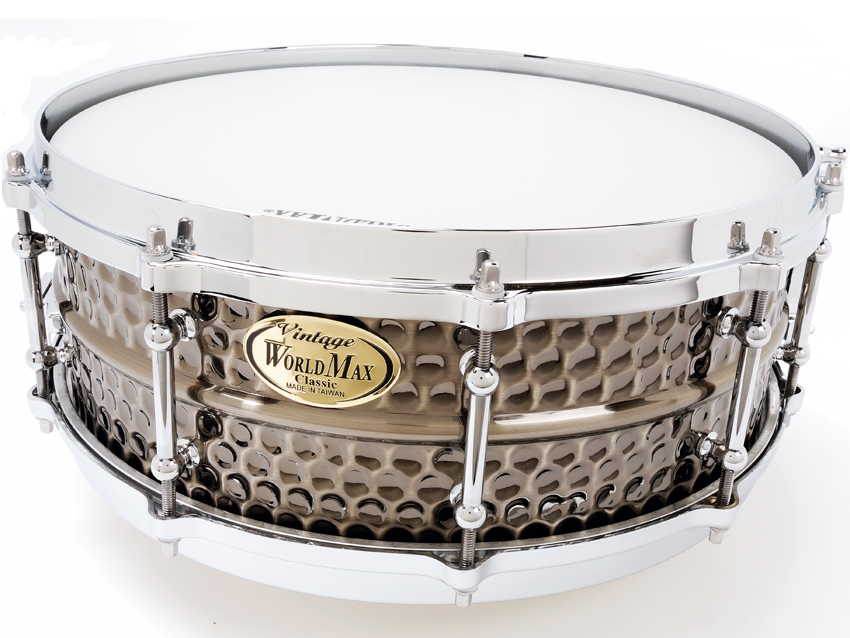
WorldMax Snare Drums
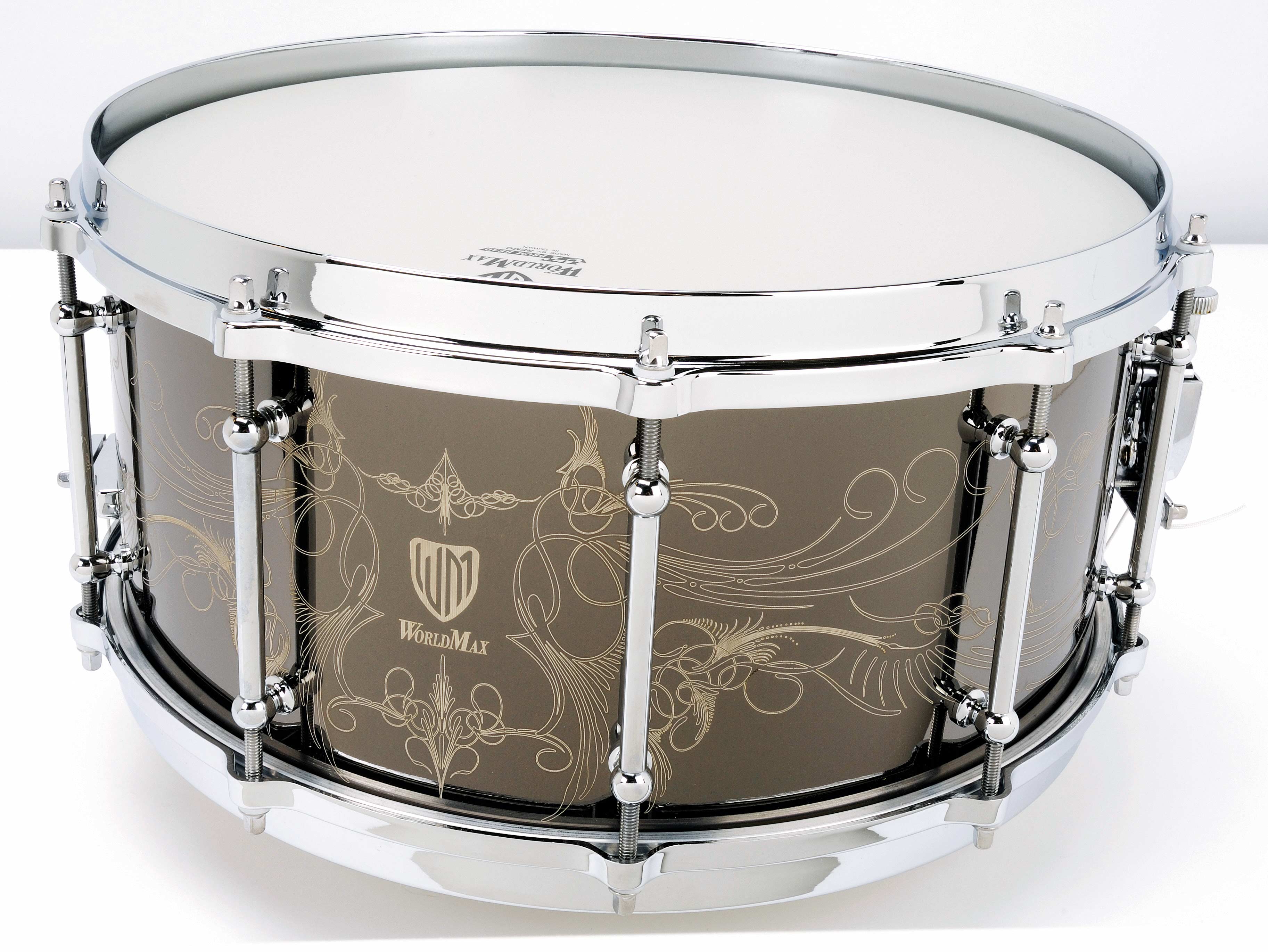
Worldmax Snare Drums
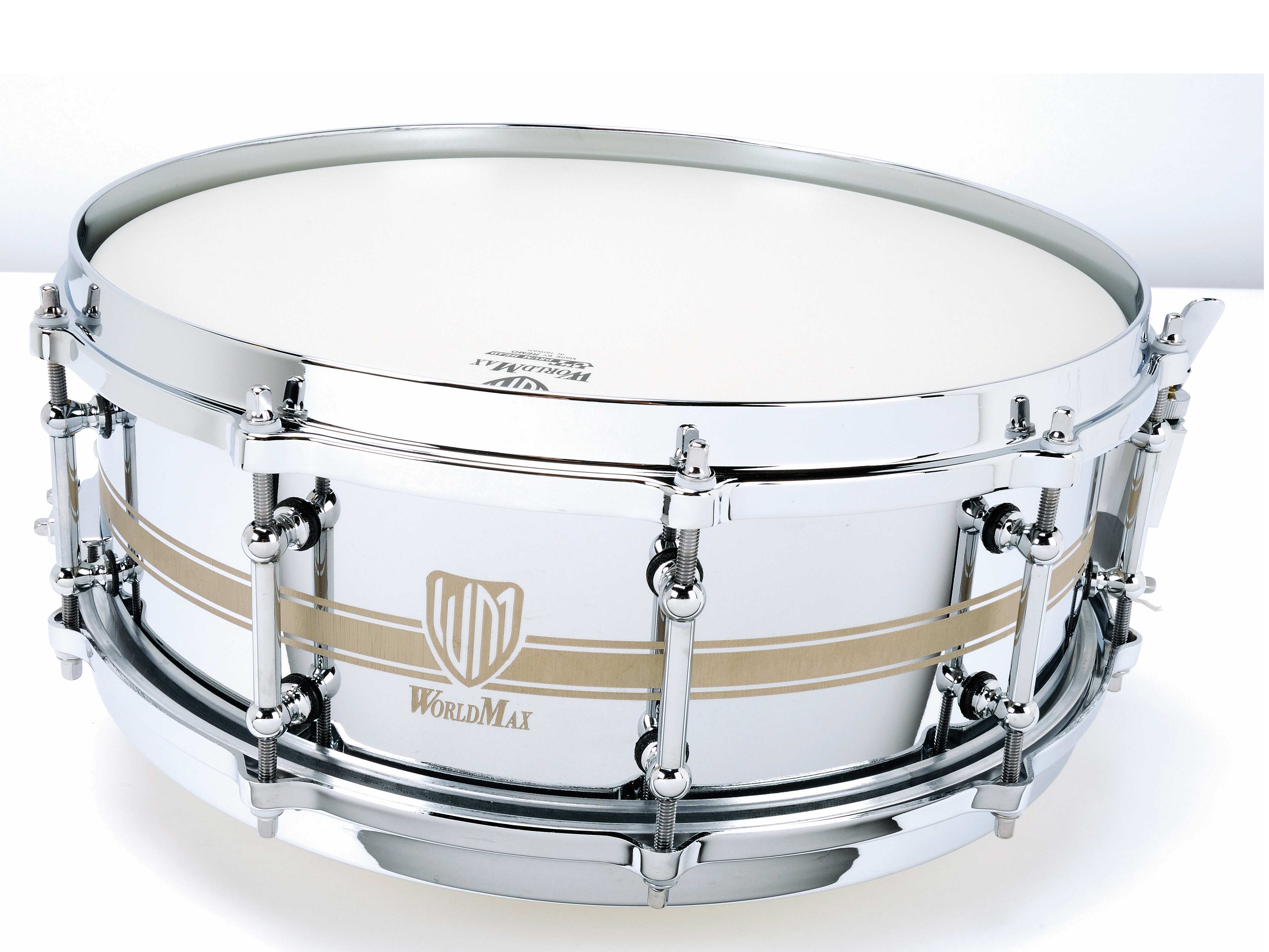
Worldmax Snare Drums
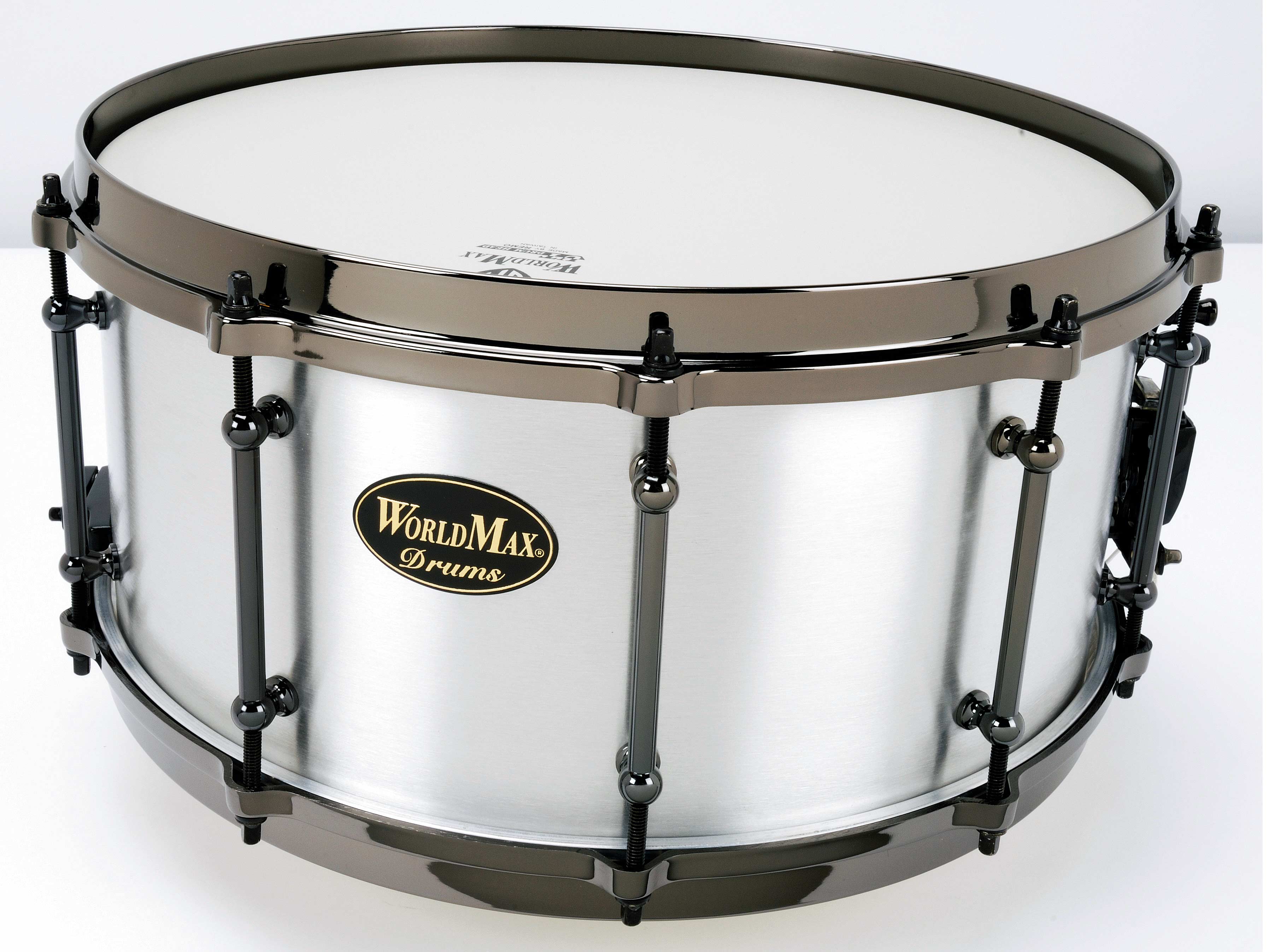
WorldMax Snare Drums
WorldMax is a Taiwanese manufacturer that's supplied UK firm BR Distribution with drum hardware and components for 15 years. But it's only within the past 18 months that WorldMax drums have been available in the UK. We were quietly impressed with the first four previously-reviewed Vintage models, but WorldMax appears to have upped its game even further.
Here are four new models boasting higher specifications and, inevitably, prices.
Build
Like the original quartet of drums, these latest snares are exclusively metal-shelled. The most obvious upgrade is in the construction method, as all the shells have been spun. This contrasts with the cheaper technique of taking a sheet of metal, bending it into a cylinder and then welding it.
All the drums feature tube lugs, die-cast hoops and are fitted with quality brass snare wires. Visually, they look the business, with the only blight being the cheap and nasty badges, thankfully only worn by two of the snares.
Hands On
Two of the drums feature 3mm-thick shells, and a mixture of temptation and fascination led us to them first. The 14"x6 1/2" 3mm aluminium shell has a simple brushed finish and smoked black hardware. To its credit, WorldMax has managed to include the lugs, hoops, tension rods, snare throw and butt in this scheme - basically every piece of shell dressing - achieving a uniform result.
Generally, an aluminium shell will produce a drier, more controlled-sounding drum compared to other metals. Spinning aluminium to this sort of thickness counteracts these usual characteristics however, encouraging a wicked bite and no small amount of volume. Some of the aluminium qualities remain, though: it didn't overly ring and a rapid decay gave it an air of cleanness that would suit intricate playing.
Its combination of authority and playability would make it ideal for the studio or any close mic-ed work.
"Once you get beyond anything harder than a tap, it enters its powerband and takes off. One for the budding Chad Smiths out there then…"
The 14"x5" 3mm steel snare's shell extends to 5mm thick in two bands that are positioned at the top and bottom (where reinforcement rings would be on a wooden drum). The exterior of the shell is polished and contains three engraved strips as a counterpoint. All that steel makes for a hefty drum and lifting it onto a stand nearly required a bending of the knees.
The sound produced is suitably intense; at its core is a hardness that doesn't so much cut through, but batters. The level of attack is not confined to the top-end; it incorporates lower frequencies as well and influences almost all aspects of the sound. Tuned to the natural timbre of the shell, it delivers a suckerpunch that would have any sound engineer's needles bent into the red.
Response was pretty good, but it's not a drum for quiet moments. Once you get beyond anything harder than a tap, it enters its powerband and takes off. One for the budding Chad Smiths out there then…
The 6 1/2" Laser-Engraved black brass drum is decorated with a gothic-tinged coat of arms that scrolls all the way around the shell, almost meeting. The deep brass shell endows it with the sort of bright, thick snare sound that had me pawing at an imaginary 26" bass drum in unison. Slackening off the head brought about a massive, fat crunch, while tuning it up delivered a blink-inducing rifle shot.
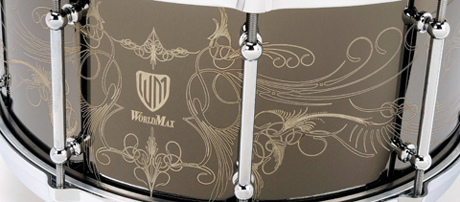
Whatever the tuning, cross-sticks and rim shots were relayed with great clarity, while its metallic ring was just within the boundaries of enthusiastic.
The 14"x5" Chic Grey plated hammered snare consists of a brass shell that's been nickel-plated and then hammered. The deep, patterned hammering of the shell would normally increase complexity - all the extra surfaces inside the drum create reflections of the soundwaves - and this is the case here. The natural zing of brass mixes with altogether darker shades, creating an individual and musical drum. It's a little like playing a heavily hammered ride cymbal, in that different areas of the drum seemed to elicit different characteristics.
“Built from the same sacred stash of NOS silicon transistors and germanium diodes, giving it the soul – and snarl – of the original”: An octave-fuzz cult classic returns as Jam Pedals resurrects the Octaurus
What’s the buzz? Meet Yellowjacket, Cherry Audio's recreation of EDP’s trend-setting Wasp from 1978
“A fabulous trip through all eight songs by 24 wonderful artists and remixers... way beyond anything I could have hoped for”: Robert Smith announces new Cure remix album









